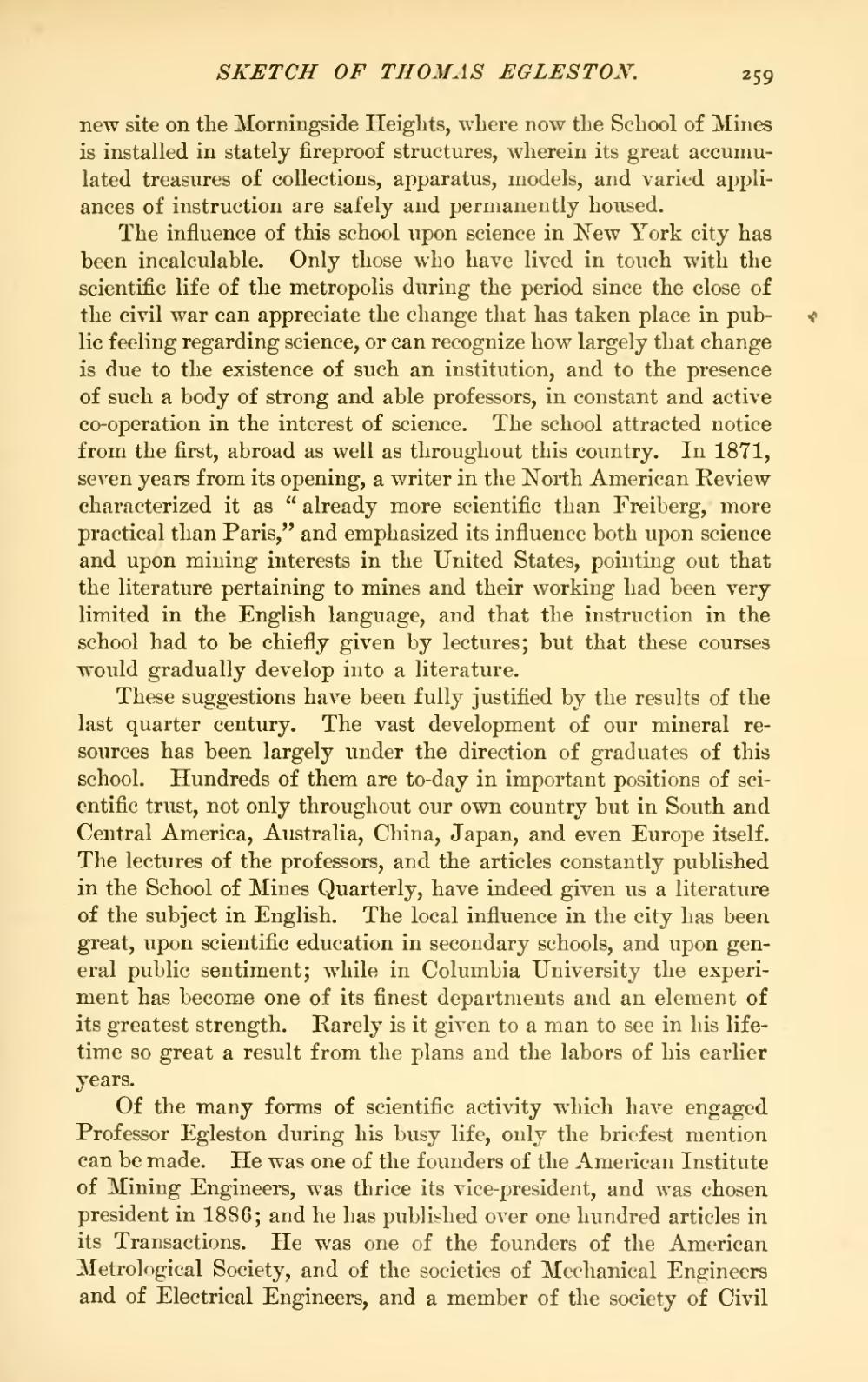new site on the Morningside Heights, where now the School of Mines is installed in stately fireproof structures, wherein its great accumulated treasures of collections, apparatus, models, and varied appliances of instruction are safely and permanently housed.
The influence of this school upon science in New York city has been incalculable. Only those who have lived in touch with the scientific life of the metropolis during the period since the close of the civil war can appreciate the change that has taken place in public feeling regarding science, or can recognize how largely that change is due to the existence of such an institution, and to the presence of such a body of strong and able professors, in constant and active co-operation in the interest of science. The school attracted notice from the first, abroad as well as throughout this country. In 1871, seven years from its opening, a writer in the North American Review characterized it as "already more scientific than Freiberg, more practical than Paris," and emphasized its influence both upon science and upon mining interests in the United States, pointing out that the literature pertaining to mines and their working had been very limited in the English language, and that the instruction in the school had to be chiefly given by lectures; but that these courses would gradually develop into a literature.
These suggestions have been fully justified by the results of the last quarter century. The vast development of our mineral resources has been largely under the direction of graduates of this school. Hundreds of them are to-day in important positions of scientific trust, not only throughout our own country but in South and Central America, Australia, China, Japan, and even Europe itself. The lectures of the professors, and the articles constantly published in the School of Mines Quarterly, have indeed given us a literature of the subject in English. The local influence in the city has been great, upon scientific education in secondary schools, and upon general public sentiment; while in Columbia University the experiment has become one of its finest departments and an element of its greatest strength. Rarely is it given to a man to see in his life-time so great a result from the plans and the labors of his earlier years.
Of the many forms of scientific activity which have engaged Professor Egleston during his busy life, only the briefest mention can be made. He was one of the founders of the American Institute of Mining Engineers, was thrice its vice-president, and was chosen president in 1886; and he has published over one hundred articles in its Transactions. He was one of the founders of the American Metrological Society, and of the societies of Mechanical Engineers and of Electrical Engineers, and a member of the society of Civil

